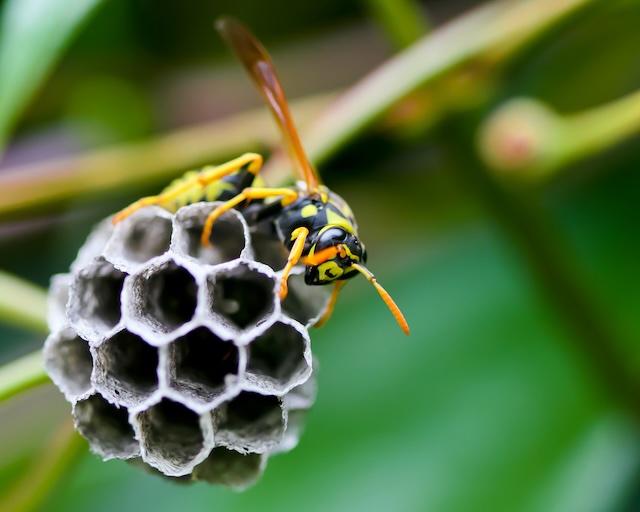While the hum of summer is nice, it’s time to move when that hum turns into a buzz around a wasp nest on your property. Getting rid of wasp nests safely requires a plan that considers both the safety of your family and the health of the bees. This guide goes over Nest Disruption 101 and gives you tips on how to safely and properly get rid of wasp nests on your property.
1. Figure Out What Kind of Wasp It Is: Figure out what kind of wasp it is before you start removing the nest. Yellowjackets, hornets, and paper wasps all build in different ways, and knowing these differences helps with the removal plan.
2. Timing is very important: Pick the right time to get rid of the nest. It’s best to avoid wasps at dusk and dawn. Choose dusk to get rid of the wasps because they are returning to the nest and are less likely to attack. Wear clothes that will cover you, like gloves, long sleeves, and a veil over your face.
3. Do It Yourself vs. expert Removal: Look at the nest’s size and location to see if you can remove it yourself or if you need expert help. Larger nests or ones that are hard to get to may be dangerous, so it’s better to have a professional take them away.
4. How to Get Rid of Them Yourself: For small houses, make a soapy water solution. If you want to avoid wasps, wait until dusk. Slowly walk up to the nest and soak it completely. This makes the nest less stable, so the wasps won’t come back.
5. Things to think about when hiring a professional movers: Hiring a professional movers makes sure that everyone is safe. Professional pest control services know how to deal with nests of all kinds and in difficult to reach places.
Eco-Friendly Methods: If you need to disturb a nest, choose methods that are good for the environment. There are professionals who use natural insecticides that don’t hurt the earth too much. Make sure that the items you use are good for the environment.
7. Evaluating the Risk Factors: Evaluate the risk factors before you try to remove the item. Think about how close the nest is to places with a lot of foot traffic, how big it is, and how allergic reactions might happen. If you are worried about any of these things, you should get professional help.
8. Precautions to Take After Removal: After disturbing the nest, take steps to stop new colonies from starting. Close off any openings to your home, quickly get rid of things that wasps like, like food waste, and think about planting plants in your yard that wasps don’t like.
Tell your neighbours about nest disruption. It’s not just about your property; it’s also about the safety of the whole neighbourhood. Talk to your neighbours about safe ways to remove wasp nests so that everyone can live in a place without wasps.
10. Look at the nest from afar. If it’s not a problem right now, you might want to leave it alone. Many kinds of wasps are good for getting rid of pests and pollinating plants. It might be better for the environment to watch from afar.
What’s Important About Responsible Nest Disruption:
Finding a balance between protecting your property and recognizing the important role wasps play in the environment is part of disturbing their nests in a responsible way. Homeowners help make their communities better and more sustainable by doing things that are smart and good for the environment.
In conclusion, disrupting a nest is a job that needs to be carefully thought out and planned. People can safely and properly go through the Nest Disruption process if they follow the rules in Nest Disruption 101. Whether you do it yourself or hire a professional, the most important thing is to make sure everyone is safe, including the buzzing pollinators in your garden.
